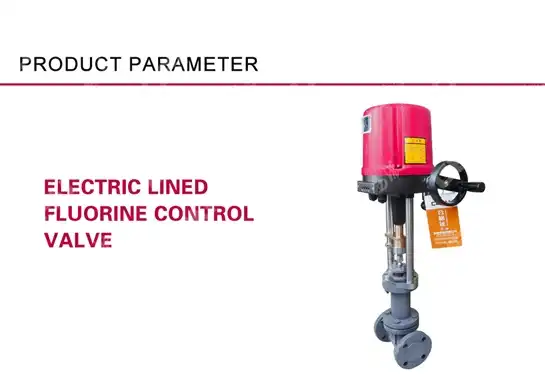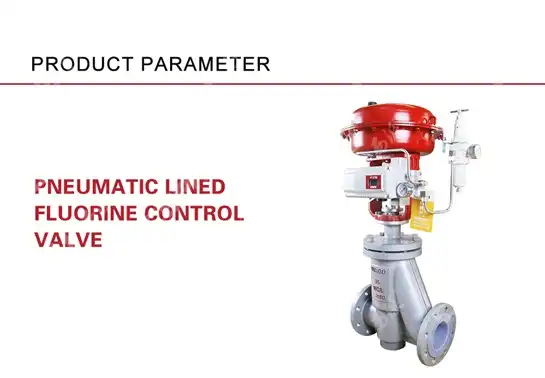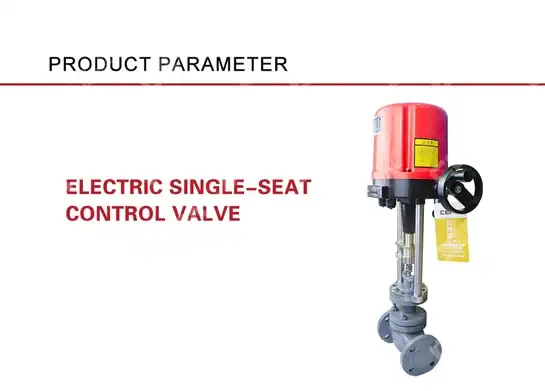Troubleshooting Your Pneumatic High-Temperature Control Valve: 5 Common Issues and Fixes
When your pneumatic high-temperature control valve starts malfunctioning during critical operations, production downtime becomes inevitable, costs skyrocket, and safety concerns emerge. Whether you're dealing with erratic valve movement, air leaks, or complete system failure in high-temperature environments, these issues can transform a smoothly running industrial process into a maintenance nightmare. This comprehensive guide addresses the five most common problems encountered with Pneumatic High-Temperature Control Valve systems and provides practical, tested solutions that industrial professionals can implement immediately to restore optimal performance and prevent costly operational disruptions.
Understanding Pneumatic High-Temperature Control Valve Fundamentals
-
Critical Components and Operating Principles
Pneumatic High-Temperature Control Valve systems operate through sophisticated mechanisms designed to withstand extreme thermal conditions while maintaining precise flow control. These valves integrate specialized materials and engineering solutions that enable reliable operation in temperatures ranging from 200°C to over 600°C, depending on the specific application requirements. The actuator assembly, valve body, and internal components must work in perfect harmony to ensure consistent performance under demanding operational conditions. The actuator mechanism relies on compressed air pressure to create linear or rotary motion, which translates into precise valve positioning. In high-temperature applications, thermal expansion becomes a critical factor that affects the dimensional stability of all components. Modern Pneumatic High-Temperature Control Valve designs incorporate thermal compensation mechanisms, specialized sealing materials, and enhanced cooling systems to maintain operational integrity. Understanding these fundamental principles is essential for effective troubleshooting, as many common issues stem from thermal-related component interactions that may not be immediately apparent during routine inspections.
-
High-Temperature Environment Challenges
Operating Pneumatic High-Temperature Control Valve systems in extreme thermal environments presents unique challenges that distinguish them from standard control valve applications. Thermal cycling causes repeated expansion and contraction of components, leading to accelerated wear patterns and potential seal degradation. The lubricating properties of standard pneumatic system oils can deteriorate rapidly under high-temperature conditions, resulting in increased friction and reduced actuator responsiveness. Material selection becomes paramount in high-temperature applications, as standard elastomers and metallic components may experience property changes that affect valve performance. Advanced Pneumatic High-Temperature Control Valve designs utilize specialized heat-resistant materials, including high-temperature seals, thermally stable lubricants, and alloys specifically engineered for extended exposure to extreme temperatures. Additionally, thermal insulation strategies and active cooling systems help maintain optimal operating conditions for sensitive actuator components while ensuring reliable valve positioning throughout the operational temperature range.
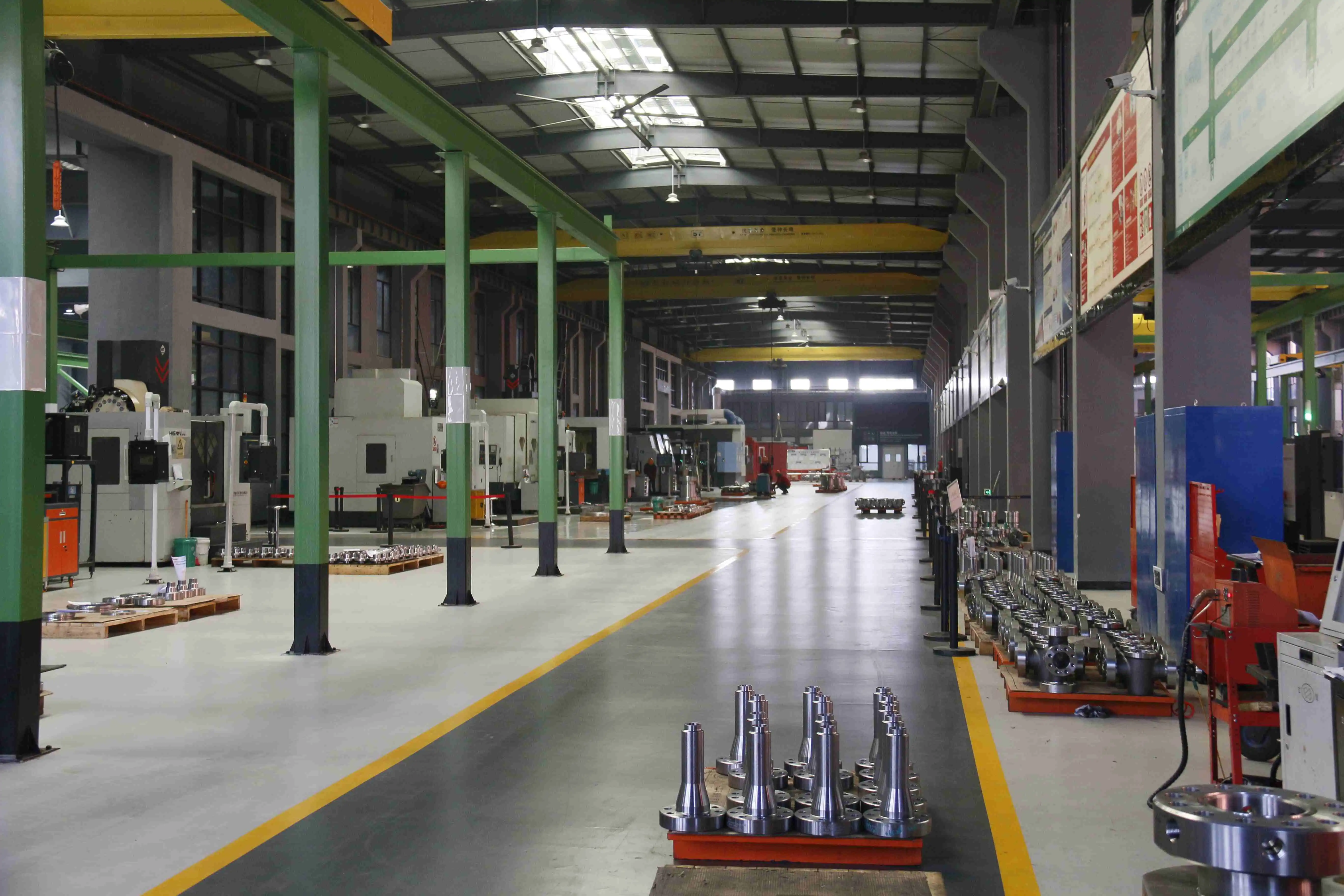
Common Issue #1: Air Leakage and Pressure Loss Problems
-
Identifying Air Leak Sources
Air leakage represents one of the most prevalent issues affecting Pneumatic High-Temperature Control Valve performance, particularly in high-temperature environments where thermal cycling accelerates seal degradation. Professional troubleshooting approaches involve systematic inspection of all pneumatic connections, actuator seals, and diaphragm assemblies to identify leak sources that can cause erratic valve movement and slow response times. Visual inspection techniques include applying soapy water solutions to suspected leak points, listening for characteristic hissing sounds, and monitoring pressure gauges for gradual pressure drops during static conditions. Advanced diagnostic methods utilize ultrasonic leak detection equipment to identify even minor air leaks that may not be immediately apparent through traditional inspection methods. In Pneumatic High-Temperature Control Valve applications, thermal expansion and contraction can create intermittent leaks that only manifest under specific temperature conditions. Comprehensive leak testing should be performed across the entire operational temperature range to ensure thorough problem identification. Documentation of leak locations, severity levels, and environmental conditions during detection provides valuable information for implementing targeted repair strategies and preventing future occurrences.
-
Seal Replacement and Repair Strategies
Repair parts should be ordered immediately upon leak detection, with overhaul kits containing diaphragms and seals readily available for most standard regulators, requiring prompt replacement to prevent system performance degradation. High-temperature applications demand specialized seal materials capable of maintaining elasticity and sealing effectiveness under extreme thermal conditions. Fluoroelastomer seals, PTFE-based gaskets, and metal-to-metal sealing surfaces provide enhanced durability compared to standard rubber seals in Pneumatic High-Temperature Control Valve applications. The repair process requires careful attention to proper installation procedures, including correct torque specifications, surface preparation, and contamination prevention measures. Thermal shock considerations are particularly important when replacing seals in high-temperature systems, as rapid temperature changes during maintenance can cause newly installed components to fail prematurely. Pre-heating replacement parts to approximate operating temperatures and implementing gradual temperature ramping procedures help ensure successful seal installation and extended service life in demanding thermal environments.
Common Issue #2: Valve Sticking and Movement Restrictions
-
Contamination-Related Sticking Problems
Contamination in air lines represents a primary cause of valve sticking, where foreign particles accumulate in actuator mechanisms and create movement restrictions that prevent proper valve positioning. High-temperature environments exacerbate contamination issues as thermal conditions can cause lubricants to break down, creating carbonized deposits that interfere with smooth actuator operation. Additionally, airborne particles can become baked onto internal surfaces, forming hard, abrasive coatings that increase friction and wear rates in Pneumatic High-Temperature Control Valve systems. Comprehensive contamination analysis involves dismantling affected actuator assemblies to identify the type, quantity, and distribution of contaminants present. Microscopic examination of removed particles helps determine contamination sources, whether from degraded system components, external environmental factors, or inadequate air filtration systems. Understanding contamination characteristics enables the development of targeted cleaning protocols and preventive maintenance strategies specifically designed for Pneumatic High-Temperature Control Valve applications operating in challenging thermal environments.
-
Mechanical Binding and Thermal Expansion Issues
Thermal expansion effects in high-temperature applications can create mechanical binding conditions that prevent smooth valve operation even when actuator systems function properly. Component dimensional changes due to thermal cycling can cause interference fits, misalignment conditions, and binding between valve stem and packing assemblies. These thermal-related binding issues may only manifest under specific temperature conditions, making diagnosis challenging during routine maintenance periods when systems are at ambient temperatures. Resolving mechanical binding problems requires comprehensive analysis of thermal expansion coefficients for all system components and implementation of appropriate clearance adjustments. Advanced Pneumatic High-Temperature Control Valve designs incorporate thermal compensation mechanisms, including spring-loaded components and flexible coupling arrangements that accommodate dimensional changes without creating binding conditions. Regular thermal cycling tests help identify potential binding issues before they cause operational problems, enabling proactive maintenance interventions that prevent costly system failures.
Common Issue #3: Actuator Response and Control Signal Problems
-
Electronic Control System Malfunctions
Modern Pneumatic High-Temperature Control Valve systems integrate sophisticated electronic control systems that convert electrical signals into precise pneumatic pressure commands. High-temperature environments can adversely affect electronic components, causing drift in control signal characteristics, component degradation, and intermittent connection problems. Circuit board assemblies, sensor elements, and wiring harnesses require thermal protection measures to maintain reliable operation under extreme temperature conditions. Diagnostic procedures for electronic control system problems involve systematic testing of signal integrity, component functionality, and thermal stability characteristics. Oscilloscope analysis of control signals helps identify noise, distortion, or timing issues that may affect valve positioning accuracy. Temperature cycling tests reveal thermal sensitivity problems in electronic components, while insulation resistance measurements detect potential wiring degradation that could cause intermittent malfunctions in Pneumatic High-Temperature Control Valve control systems.
-
Pneumatic Signal Transmission Issues
Proper troubleshooting of pneumatic actuator valves requires checking for air leaks, ensuring proper alignment, inspecting for blockages, and testing actuator response characteristics to identify signal transmission problems. Signal transmission problems in pneumatic systems can result from restricted air passages, contaminated pilot valves, or degraded pressure regulation components. High-temperature conditions can cause thermal expansion of air passages, creating flow restrictions that affect signal response times and positioning accuracy. Comprehensive pneumatic signal analysis involves measuring pressure levels, flow rates, and response times throughout the control system. Pressure transducer installations at critical system points enable real-time monitoring of signal transmission characteristics during operational conditions. Temperature-compensated pressure measurements help distinguish between thermal effects and actual component malfunctions, ensuring accurate diagnosis of Pneumatic High-Temperature Control Valve signal transmission problems.
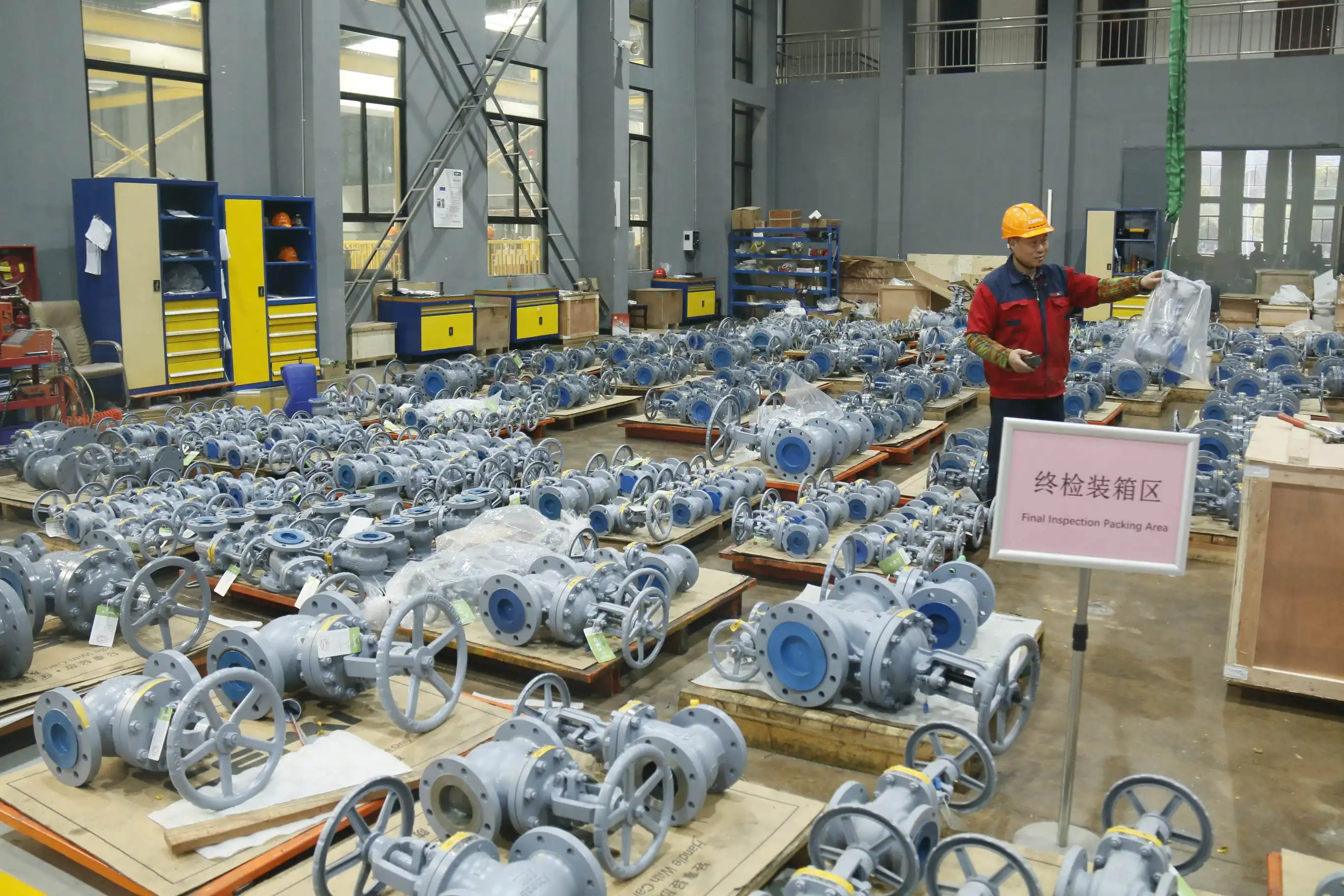
Common Issue #4: Temperature-Related Component Degradation
-
Material Property Changes Under High Heat
Prolonged exposure to high temperatures causes material property changes that can significantly affect Pneumatic High-Temperature Control Valve performance and reliability. Metallic components may experience changes in hardness, strength, and dimensional stability, while elastomeric seals can lose flexibility and sealing effectiveness. These material degradation processes are gradual and may not be immediately apparent during routine inspections, making proactive monitoring essential for maintaining system reliability. Comprehensive material analysis programs involve periodic testing of removed components to assess degradation levels and remaining service life. Hardness testing, dimensional analysis, and microscopic examination reveal the extent of thermal damage and help establish replacement schedules for critical components. Understanding material degradation patterns enables the development of predictive maintenance strategies that prevent unexpected failures in Pneumatic High-Temperature Control Valve systems operating under demanding thermal conditions.
-
Thermal Cycling Fatigue Effects
Repeated heating and cooling cycles create fatigue conditions that can lead to crack formation, dimensional instability, and eventual component failure in high-temperature valve applications. Thermal cycling fatigue particularly affects joints, welds, and transition areas where different materials with varying expansion coefficients interface. These fatigue-related problems often manifest as gradual performance degradation rather than catastrophic failures, making early detection challenging. Fatigue analysis procedures involve non-destructive testing methods, including dye penetrant inspection, magnetic particle testing, and ultrasonic examination to detect early-stage crack formation. Thermal cycling test protocols simulate operational conditions to identify components most susceptible to fatigue-related failures. Implementation of fatigue-resistant design features and appropriate material selection helps minimize thermal cycling effects in Pneumatic High-Temperature Control Valve applications while extending overall system service life.
Common Issue #5: Calibration Drift and Performance Degradation
-
Systematic Calibration Procedures
Common pneumatic valve problems include hysteresis, stiction, and crawling behaviors that require comprehensive analysis beyond simple visual inspection to properly diagnose and resolve. Calibration drift in Pneumatic High-Temperature Control Valve systems results from cumulative effects of thermal cycling, component wear, and material property changes over extended operational periods. Systematic calibration procedures must account for temperature-dependent characteristics and provide compensation mechanisms for thermal effects on valve positioning accuracy. Effective calibration protocols involve multi-point testing across the entire operational range under actual temperature conditions. Dead band measurements, linearity assessments, and repeatability testing reveal the extent of calibration drift and help establish correction factors for improved control accuracy. Temperature-compensated calibration procedures ensure that Pneumatic High-Temperature Control Valve systems maintain optimal performance characteristics throughout their operational temperature range while accommodating inevitable thermal effects on system components.
-
Performance Monitoring and Predictive Maintenance
Continuous performance monitoring systems provide real-time data on Pneumatic High-Temperature Control Valve operation, enabling early detection of degradation trends before they result in system failures. Advanced monitoring systems track valve positioning accuracy, response times, and control signal characteristics while correlating performance data with operational conditions and thermal cycling patterns. This comprehensive data collection enables predictive maintenance strategies that optimize system reliability and minimize unplanned downtime. Data analysis algorithms identify subtle performance changes that may indicate developing problems, allowing maintenance interventions to be scheduled during planned outages rather than emergency response situations. Trending analysis of key performance parameters helps establish component replacement schedules based on actual operational data rather than conservative time-based maintenance intervals. Integration of performance monitoring data with maintenance management systems ensures that Pneumatic High-Temperature Control Valve systems receive appropriate attention based on actual condition rather than arbitrary scheduling criteria.
Conclusion
Effective troubleshooting of Pneumatic High-Temperature Control Valve systems requires systematic approaches that address thermal effects, material degradation, and component interactions unique to high-temperature applications. The five common issues outlined provide a comprehensive framework for diagnosing and resolving most operational problems encountered in demanding industrial environments.
Cooperate with CEPAI Group Co., LTD.
CEPAI Group Co., LTD. stands as China's premier Pneumatic High-Temperature Control Valve manufacturer, combining advanced intelligent manufacturing capabilities with comprehensive quality assurance systems. Established in 2009 with 156 million yuan investment in cutting-edge production facilities, our company operates the Asia Pacific region's longest high-precision intelligent manufacturing flexible production line. As a national high-tech enterprise and specialized "little giant" company, CEPAI maintains rigorous ISO quality standards while serving major clients including PetroChina, Sinopec, and CNOOC.
Our extensive certifications including API Q1, API 6A, CE, and multiple SIL certifications demonstrate our commitment to delivering High Quality Pneumatic High-Temperature Control Valve solutions. Whether you need China Pneumatic High-Temperature Control Valve factory direct pricing, reliable China Pneumatic High-Temperature Control Valve supplier partnerships, or wholesale Pneumatic High-Temperature Control Valve for sale options, CEPAI provides comprehensive pre-sales consultation, customized solutions, and dedicated after-sales support. Contact us at cepai@cepai.com for expert technical assistance and competitive Pneumatic High-Temperature Control Valve price quotations.
References
1. Smith, J.R. & Williams, M.K. "High-Temperature Control Valve Design and Applications in Process Industries." Journal of Process Control Engineering, Vol. 45, No. 3, pp. 123-145.
2. Anderson, D.L. "Pneumatic Actuator Systems: Troubleshooting and Maintenance Strategies." Industrial Valve Technology Quarterly, Vol. 28, No. 2, pp. 67-89.
3. Chen, L.H. & Roberts, P.A. "Material Degradation in High-Temperature Valve Applications: Analysis and Prevention Methods." Materials Science and Engineering Review, Vol. 52, No. 4, pp. 201-224.
4. Thompson, K.M. "Control Valve Performance Optimization in Extreme Temperature Environments." Automation Systems Engineering Journal, Vol. 39, No. 1, pp. 45-68.
_1745994738000.webp)
Get professional pre-sales technical consultation and valve selection services, customized solution services.
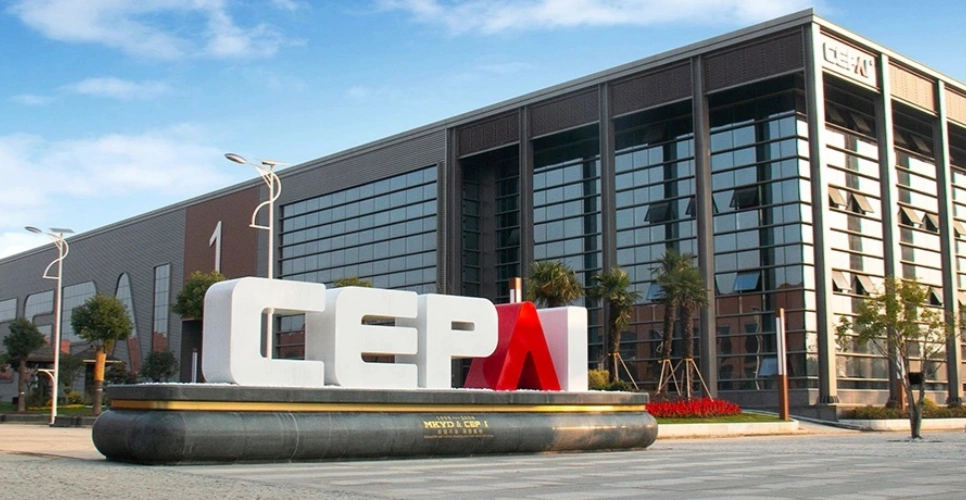
About CEPAI
